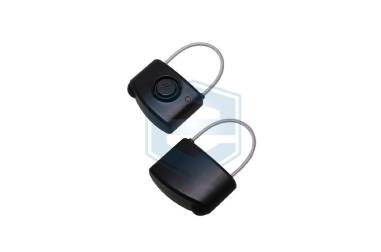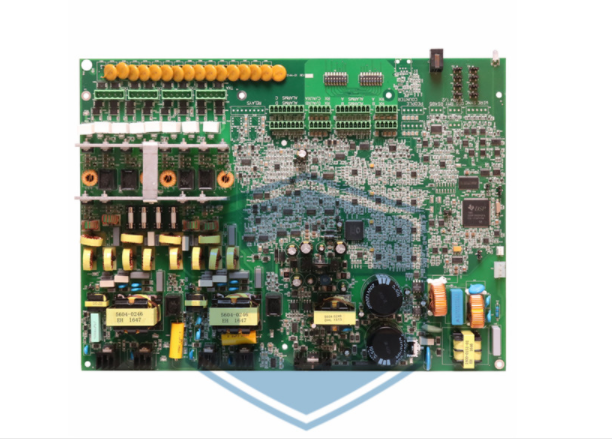EAS, also known as electronic commodity Anti-Theft System, is currently one of the commodity security measures widely adopted by large retail industries. EAS came out in the United States in the mid-1960s. It was originally used in the apparel industry. Now it has expanded to more than 80 countries and regions around the world. The application field has also expanded to various industries such as department stores, supermarkets, and books, especially in large supermarkets. Development.
EAS system performance evaluation indicators include system detection rate, system false alarms, anti-environmental interference ability, degree of shielding by metal objects, protection width, types of goods protected, performance/size of anti-theft tags, degaussing equipment, etc.

EAS System
The detection rate refers to the number of alarms when a unit number of valid tags pass through different locations in the detection area in different directions.
Due to the directivity of labels in some systems, the concept of detection rate should be based on the average detection rate in all directions. In terms of the three most commonly used principles in the market, the detection rate of acousto-magnetic systems is the highest, generally exceeding 95%; the detection rate of radio/radio frequency systems is between 60-80%; the detection rate of electromagnetic waves is generally 50-70 %between. A system with a low detection rate is more likely to fail to report when the product is taken out. Therefore, the detection rate is one of the main performance indicators for evaluating the quality of an anti-theft system.
System false alarm refers to the non-theft tag triggering the system's alarm. If an alarm is triggered by a non-labeled item, it will be difficult for the staff to judge and deal with, and even cause conflicts between customers and shopping malls. Due to the limitation of the principle, the current common EAS systems cannot completely eliminate false alarms, but there will be differences in performance. The key to selecting a system is to look at the false alarm rate.
When the equipment is disturbed, the system will send out an alarm signal when no one passes by or when no item triggers the alarm passing by. This phenomenon is called false alarm or self-alarming.
Radio/RF systems are susceptible to environmental interference and often have self-sounding phenomenon. Therefore, some systems are equipped with infrared devices, which is equivalent to installing an electric switch. Only when people pass through the system and block the infrared rays, the system starts to work. When a person passes by, the system is in a standby state. Although this solves the self-snarling when no one passes by, it still cannot solve the self-snarling when no one passes by.
The electromagnetic wave system is also susceptible to environmental interference, especially the interference of magnetic media and power supply, which affects the performance of the system.
Due to the unique resonance distance and intelligent technology, the acousto-magnetic system is controlled by a computer and driven by software. It can automatically detect the surrounding environmental noise, so it can adapt to the environment well and has a good ability to resist environmental interference.
Many commodities in shopping malls and supermarkets contain metal items, such as food, cigarettes, cosmetics, medicines, etc. wrapped in metal foil; there are also commodities with their own metal, such as batteries, CD/VCD discs, hairdressing supplies, hardware tools And so on; In addition, shopping carts and shopping baskets provided by the mall. The impact of metal-containing items on the EAS system is mainly the shielding effect of the induction tag, so that the detection device of the system cannot detect the existence of effective tags or the detection sensitivity is greatly reduced, causing the system to not send an alarm.
The most severely affected by metal shielding is the radio/radio frequency RF system, which may be one of the main limitations of radio/radio frequency in actual use. The electromagnetic wave system is also affected by metal objects. When a large piece of metal enters the detection area of the electromagnetic wave system, the system will "stop" phenomenon. When the metal shopping cart or shopping basket passes by, even if the goods inside have a valid label, it will No alarm is generated because of shielding. Except for pure iron products such as iron pots, the acoustic and magnetic system will be affected. Other common items in supermarkets such as metal items/tinfoil paper, metal shopping carts/shopping baskets can work normally.
Shopping malls need to consider the protection width of the anti-theft system, so as not to exceed the width between the supports and affect the entry and exit of customers. Moreover, shopping malls hope that the entrances and exits are more spacious.
(6) Types of protected commodities
The commodities in the supermarket can generally be divided into two categories. One category is "soft" products, such as clothing, shoes and hats, knitwear, which are generally protected by Hard Labels and can be reused; the other category is "hard" products, such as cosmetics, food, shampoo, etc., which use soft Label protection, degaussing at the cash register, generally one-time use.
For hard tags, the types of goods protected by various anti-theft systems are similar. But for soft labels, due to the different effects of metal objects, the difference is very big.
(7) Performance of anti-theft label
The anti-theft label is an important part of the entire electronic anti-theft system. The performance of the anti-theft label affects the performance of the entire anti-theft system. Some labels are easily affected by moisture; some cannot be bent; some labels can be easily concealed in the packaging box of the product; some will cover the useful explanatory text on the product and so on.
(8) Degaussing equipment
The reliability and ease of operation of degaussing equipment are also important factors in choosing an anti-theft system. At present, the more advanced degaussing equipment is non-contact type. It produces a certain height of degaussing area. When the effective tag passes by, the degaussing of the tag is completed instantaneously without touching the degaussing device, which facilitates the operation of the cashier and speeds up the cash register.
The EAS System is often used in conjunction with other anti-theft systems, such as closed-circuit television monitoring systems and cash register monitoring systems. The cash register monitoring system is designed for cashiers who are exposed to a large amount of cash every day and are prone to desire for theft. It adopts the technology of superimposing the cash register operation interface and the closed-circuit television monitoring screen to ensure that the store management personnel know the actual situation of the cash register.
The future development direction of EAS is mainly concentrated in two aspects: one is the anti-theft source tag plan, and the other is wireless identification technology. As Smart ID is affected by its technological maturity and price factors, it will not be directly used by users anytime soon.Welcome to contact Enguard to know more.

Basic Approach to Preventing Retail Business Losses
Apr. 16, 2022
What You Need to Know about EAS Security Tag Alerts
Apr. 06, 2022